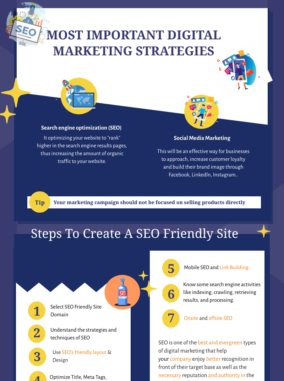
Maintaining a digital marketing strategy is an iterative process, summarized below in a “360-degree digital marketing strategy model”. It is a constant question of how customers change, how media consumption behavior changes, which media change in terms of properties, what changes in the effect of using a medium, is the content good. I can continue like this for a while.
The basis for digital marketing strategy
A digital marketing strategy is often developed to get and keep products and services on the market. In the end, it is often across the digital marketing strategy. Also called omnichannel, multi-channel or integrated strategy. The success factors for an effective (cross) digital marketing strategy are (in outline):
Empathic target group and customer knowledge
specific media knowledge
strengthening the channels
measurability of the strategy
the storyline, the message, and the content
Customer-oriented communication
Establish how you now communicate with customers and how this communication is effective and leads to success. You often see terms such as loyalty and commitment coming back in this phase. Define the terms, link KPIs so that you can measure them. You can, therefore, better monitor and appreciate the reaction and action of the customer. This increases the relevance for the customer and therefore the ultimate success.
Social media
A container concept. Make this clear and concrete for your digital marketing strategy. The customers are never on all social media and the media on which they are active are used in different ways.
Mobile media
Target groups and customers are active with mobile devices at a certain level and with a certain intensity. If so, you can make use of it by strengthening the connection through those channels. But also to make use of the technological possibilities that a mobile device offers.
The website
Often essential in the digital marketing strategy, the ultimate gateway to success. Customers via web shops lead via downloads. What is special is that a website is being built without taking the cross digital marketing strategy as a starting point. Within that strategy, you see the role of the website for the specific personas, target groups, and customers on various journeys. With that knowledge, you can build and set up a website. Consider the conversion optimization and the usability of a website. An important part of the strategy here is also search engine optimization (SEO).
The extent to which you are active online and people come to your website from these activities, almost as a matter of course. A powerful strategy that can certainly strengthen the digital marketing strategy. This requires a continuous analysis of the use of media and the content and nature of the content. Also, make sure that you can measure and see where the traffic on the website comes from.
Digital advertising
Commercial advertising is possible on almost all digital means. Many websites, social media, and mobile media are open to making use of the possibility to get in contact with the visitor. This chapter also includes terms such as retargeting, remarketing, affiliate marketing, banners, display advertising, etc.
Email Marketing
When making contacts with the target group and customers, the email address is still an important link in the chain. Use the email contact well and carefully. Targeted emails, weekly emails, daily messages, newsletters. It is a small selection of the many options. Just look at larger players in the digital market to see how they successfully use email in different ways.
Customer Service
The contacts with the organization are not only with people from the service department. Everyone who has contact with a customer must have a service attitude. Someone calls, that is a moment of contact, record the moment and make sure that the customer receives a clear response that is useful to him/her.
If you constantly go through the 360-degree digital marketing strategy model, the strategy that you are implementing or have implemented will be successfully continued.
